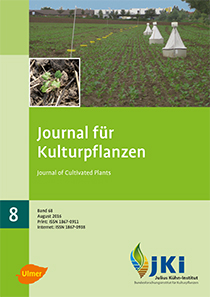More health-supporting substances and taste in the storage organ of vegetables by colored foils
Keywords:
Light spectra, red-blue ratio, dark red, coloured films, kohlrabi, radish, antioxidants, riboflavinAbstract
The effect from changing of the light spectra concerning the red-blue relation and the percentage in dark red (700 nm ± 30) on the building of the storage organ of vegetables were confirmed in several scientific works. This effect can be accompanied by an increased antioxidant concentration in the storage organ. In the field tests carried out by the IASP 2015 with kohlrabi and radish different light spectra were generated by transparent coloured foils (red, green, yellow and colourless). These light spectra were applied temporary only during certain development stages of the plants to induce plant reactions. The experiments revealed that this light impulse has above all an influence on the content of the antioxidants and the sugar concentration of the storage organs. Effects on the size of the organs (bulb of kohlrabi, root of radish) were insignificant.
It became apparent that a change of the light spectrum makes sense in some development stages of the plants only. At the same time it was found that the coloured foils have different effects on the content of the antioxidants in the examined cultures. For example, the riboflavin content in the kohlrabi under the green foil was positively influenced. It was five times as much as in the control. In radish more riboflavin was synthesized under the red foil, it was 48% more than in the control.
DOI: 10.5073/JfK.2016.08.02, https://doi.org/10.5073/JfK.2016.08.02
Downloads
Published
Issue
Section
License
The content of the journal is licensed under the Creative Commons Attribution 4.0 License. Any user is free to share and adapt (remix, transform, build upon) the content as long as the original publication is attributed (authors, title, year, journal, issue, pages).
The copyright of the published work remains with the authors. The authors grant the Journal of Cultivated Plants, the Julius Kühn-Institut and the OpenAgrar repository the non-exclusive right to distribute and exploit the work.







